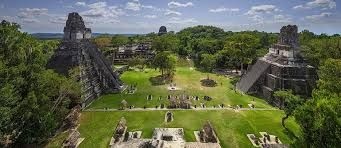
Tikal
Nobody knows why the Mayans abruptly surrendered the antiquated, vertical city of Tikal in the year CE 900, yet notwithstanding the absence of tenants, the great skazatone structures still stand tall. Tikal was the capital of a triumph express that turned into a standout amongst the most capable kingdoms of the antiquated Maya. Despite the fact that momentous structural engineering at the site goes over the extent that the fourth century BCE, Tikal arrived at its apogee amid the Ca 200 to 900 BCE. Placed in the Peten Basin (now north Guatemala), Tikal is one of the biggest archeological locales and urban focuses of pre-Columbian Maya civilization. Today, just 15 percent of the site has been unearthed, however what is noticeable won't disillusion you six pyramids beat by stately sanctuaries involve the biggest parts of the 60sq. km. unpredictable through which guests can meander and investigate. Perplexing structures of stone and cut wood as sacrificial tables, places of worship, stelaes, boulevards and tombs will send any explorer's psyche meandering go into the profundities of history, pondering at the riddle of Tikal in the midst of the lavish Guatemalan rainforest. Tikal is the best comprehended of any of the expansive swamp Maya urban communities, with a long dynastic ruler list, the disclosure of the tombs of large portions of the rulers on this rundown and the examination of their sanctuaries, royal residences and landmarks.



